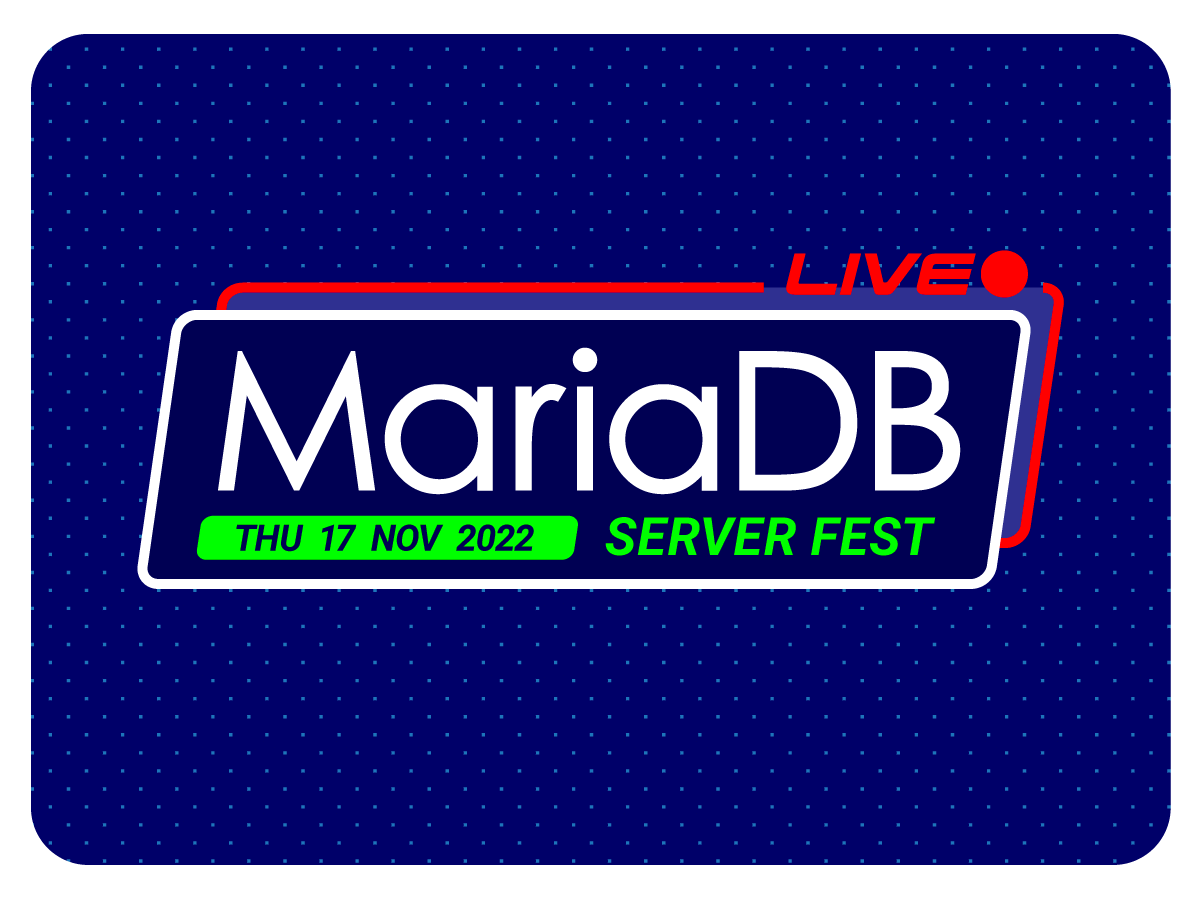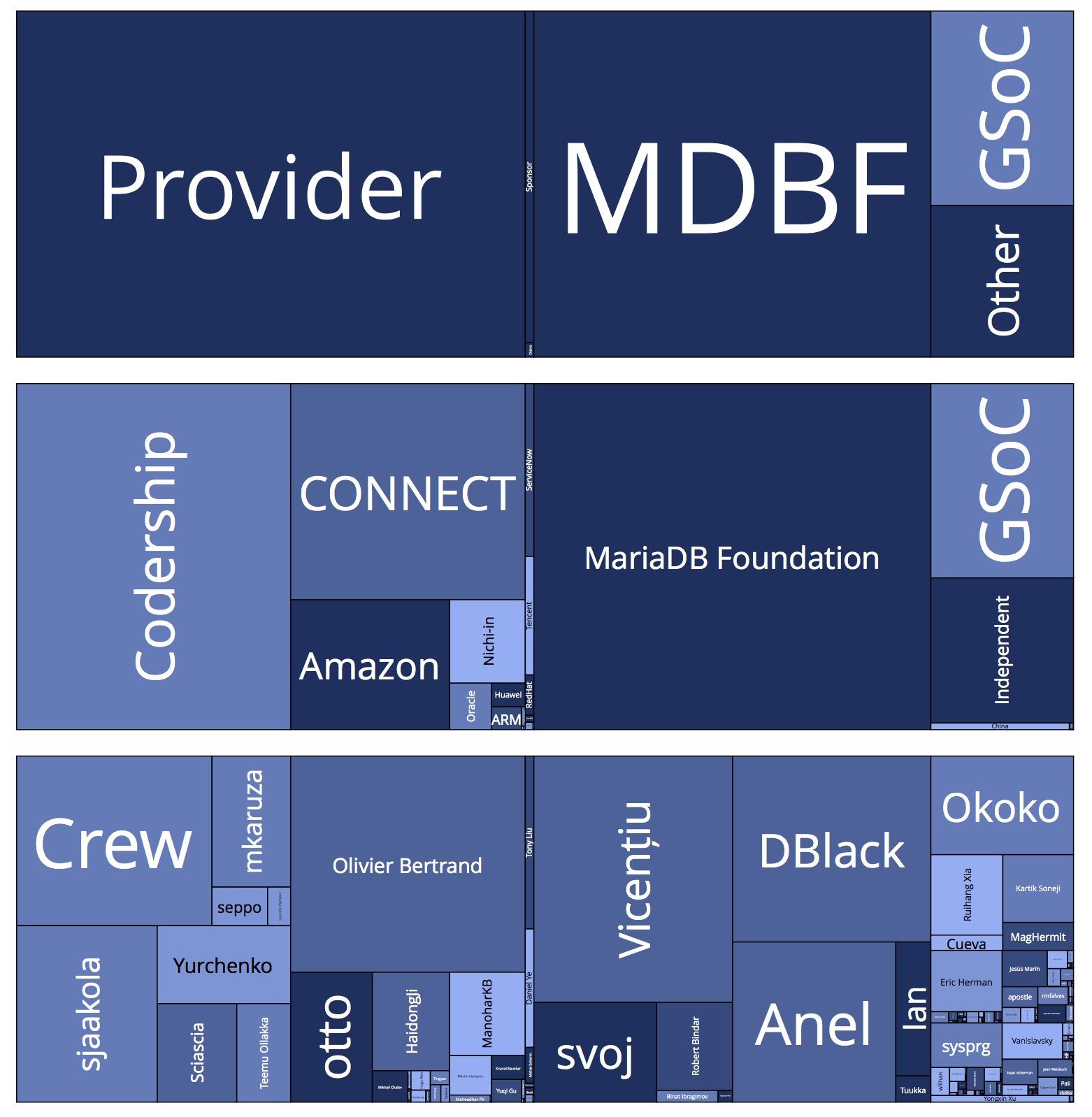Last month we provided contributor statistics for the last few years. We have had some fantastic feedback from this so today we are presenting you with another drop of contributor statistics for the last month. Normally we would be doing these quarterly but there are so many extra things to report that we decided to do a bonus one now.
Some key things have happened in the last month which affect the data, the first is that MariaDB 10.11 has had a preview release. Which means there has been a flurry of activity around this.
…
The MariaDB Foundation will be hosting a Server Fest on Thursday 17 November 2022. This time it’ll be a hybrid event, harnessing the energy that comes from many of the participants being present in person.
To encourage interaction, the event will be streamed live, but will not immediately be made available online, so don’t miss out on this opportunity to interact with the speakers and MariaDB members in person!
The keynote speaker will be Wikimedia Foundation’s Manuel Arostegui. The schedule and further details will be announced soon.
We start at 14:00 Paris time (CET) – 8:00am New York, 20:00 Beijing.
…
We are pleased to announce the preview release of the MariaDB 10.11 series, MariaDB 10.11.0.
Candidate features for MariaDB 10.11
Preview releases are designed to get features into the hands of users more quickly, and should not be used for production. Not all features in a preview release may make the Generally Available (GA) release. Features under consideration for 10.11 include:
Authentication
- GRANT … TO PUBLIC (MDEV-5215)
- Separate SUPER and READ ONLY ADMIN privileges (MDEV-29596)
Optimizer
- Semi-join optimization for single-table update/delete statements (MDEV-7487)
- Allow pushdown of queries involving UNIONs in outer select to foreign engines (MDEV-25080)
- Make ANALYZE FORMAT=JSON show time spent in the query optimizer (MDEV-28926)
Information Schema
- Performance Issues reading the Information Schema Parameters table (MDEV-29104)
- Full table scan in the Information Schema Parameters and Information Schema Routines table (MDEV-20609)
System versioning
- System versioning setting, system_versioning_insert_history, to allow history modification (MDEV-16546)
- mariadb-dump: dump and restore historical data (MDEV-16029)
Windows
- Windows – passwordless login for mariadb root user, for OS admin users (MDEV-26715)
Miscellaneous
- Rename slow queries variables (MDEV-7567)
- Variable replicate_rewrite_db cannot be found in “show global variables” (MDEV-15530)
- innodb_write_io_threads and innodb_read_io_threads are now dynamic, and their values can be changed without restarting the server (MDEV-11026)
The features that pass testing will then be merged into MariaDB Server 10.11.1.
…
Continue reading “MariaDB 10.11.0 preview release now available”
The MariaDB Foundation is pleased to announce the availability of MariaDB 10.9.3, MariaDB 10.8.5 and MariaDB 10.7.6, the latest Generally Available releases in their respective short-term support series (maintained for one year from their first GA release dates), as well as MariaDB 10.6.10 the latest stable release in the 10.6 long-term support series (maintained for five years).
These releases fix critical regressions found in the previous releases. See the release notes and changelogs for details.
Release Notes Changelog What is MariaDB 10.9?
…
Continue reading “MariaDB 10.9.3, 10.8.5, 10.7.6 and 10.6.10 now available”
Our most recent MariaDB Server release introduced some regressions starting with the 10.6 series, affecting 10.7 – 10.9 as well. This blog post is here to explain the problems in hopes that the impact is minimized. We are likely going to release a new version of MariaDB correcting these problems soon.
InnoDB Full Text Index on tables causes an assertion error (MDEV-29342)
There was a bug in the InnoDB Storage Engine where the full text index could go out of sync with the actual table data. This would happen when only one new row was inserted between the last InnoDB sync (which happens asynchronously) and a server shutdown.
…
Continue reading “Regressions in recent MariaDB Server releases”
In the last meeting, the MariaDB Foundation Board proposed the regular publishing of contribution statistics. This post is an update on our progress and the first report.
(more…) …
Something that is very important to us in the MariaDB Foundation is “Openness”. This is not only in the open source nature of MariaDB, but we are also very transparent in what happens with the MariaDB source code. With that in mind we have been working on ways to generate metrics that show information about the community in a consumable form.
(more…) …
I have been working for the MariaDB Foundation as the Chief Contributions Officer for a couple of weeks and it is fantastic being part of the MariaDB family again. Part of my job is to help the community massage pull requests into something that we can merge. I am, however, finding that one of the worst parts of my job is having to say “no” to contributions that clearly took a lot of time and effort on the part of the developer.
Contributions could be turned down or at least will require changes for a number of reasons.
…
Continue reading “The Path to Code Contributions in MariaDB Server”




